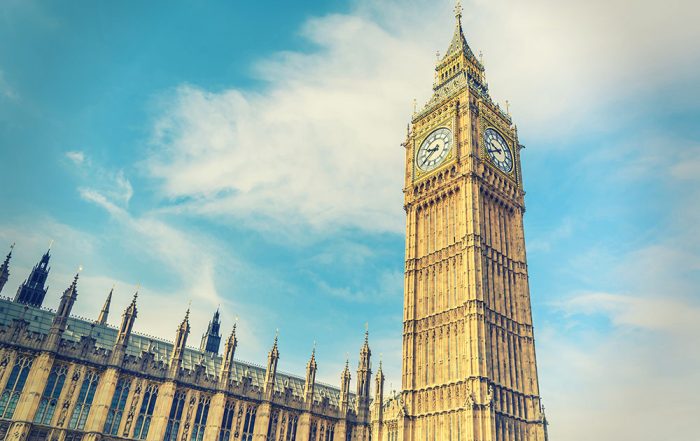
The Chancellor delivered the Autumn Budget on 26 November 2025, outlining significant changes across personal taxation, pensions, savings, and business incentives. While much of the national focus centred on household support, the most important developments for business owners relate to frozen thresholds, increasing taxes on investment income, pension rule changes and adjustments to ISA allowances.
This article summarises the measures most relevant to Grosvenor Wealth Management clients.
Income Tax: Thresholds Frozen Until 2031
The personal allowance remains fixed at £12,570, and the higher-rate threshold stays at £50,270. These thresholds will remain frozen until April 2031.
This continued freeze results in fiscal drag, where more income is pulled into higher tax bands over time, even without significant increases in earnings. Business owners earning above £100,000 will continue to face the withdrawal of the personal allowance, creating a very high effective marginal rate.
Dividend Tax: Rates Increasing from April 2026
Dividend tax rates will rise from 6 April 2026. The new rates will be:
- Basic rate: 10.75 percent
- Higher rate: 35.75 percent
- Additional rate: 39.35 percent
The annual £500 dividend allowance remains unchanged. Company directors who rely on a blend of salary and dividends may wish to review their remuneration strategy ahead of the 2026 changes.
Savings Income: Higher Tax Rates from April 2027
From 6 April 2027, the tax rates applied to property and savings income will increase by 2 percentage points across all bands:
- Basic rate: increasing to 22 percent
- Higher rate: increasing to 42 percent
- Additional rate: increasing to 47 percent
The existing savings allowance remains available. Business owners holding significant cash balances or interest-bearing investments may see a reduced net return after these changes.
Pensions: Allowances Maintained but Salary Sacrifice Tightens
Annual Allowances
For 2026/27, the main pension limits remain in place:
- Annual Allowance: £60,000
- Lump Sum Allowance: £268,275
- Lump Sum and Death Benefit Allowance: £1,073,100
Salary Sacrifice Changes from April 2029
From April 2029, only the first £2,000 of pension contributions made through salary sacrifice each year will be exempt from National Insurance. Any contributions above this will attract both employer and employee NICs.
This is a major change for directors who use salary sacrifice as a tax-efficient funding method and will require forward planning.
Pensions and Inheritance Tax from 2027
From 6 April 2027, unused pension funds will become part of an individual’s estate for inheritance tax purposes. This is a significant change for clients who have used pensions as part of long-term estate planning, and early consideration will be important.
ISA Reform: Cash Restrictions from April 2027
While the overall ISA limit remains frozen at £20,000 until 2031, new rules apply from 6 April 2027:
- Cash ISA limit will be capped at £12,000
- The remaining £8,000 must be placed in a stocks and shares ISA
- Investors aged 65 or over can continue to invest the full £20,000 in cash if they choose
This will encourage longer-term investing and may require some investors to reassess their risk profile.
Capital Gains Tax: Reliefs Tighten from April 2026
Capital Gains Tax rates and the £3,000 annual exemption remain unchanged. However, the rate of Business Asset Disposal Relief will increase from 14 percent to 18 percent for qualifying disposals from April 2026.
Business owners planning an exit or internal restructure may want to review timing, structure, and relief eligibility as part of their wider succession or sale strategy.
Corporation Tax: No Rate Changes
Corporation Tax remains:
- 25 percent for profits above £250,000
- 19 percent for profits up to £50,000
- Marginal relief for profits between these thresholds
The Government has committed to keeping the main rate capped at 25 percent for the duration of the Parliament, offering some stability for long-term planning.
Business Incentives: Higher Limits for EIS, VCT and EMI
Several pro-investment measures were announced, including:
- Higher investment limits for companies raising funds under the Enterprise Investment Scheme and Venture Capital Trusts, although VCT tax relief has been reduced to 20%
- Increased eligibility limits and doubled share option capacity for the Enterprise Management Incentives scheme
- A longer 15-year exercise window for EMI options, including retrospectively applied to existing schemes
These measures provide opportunities for high-growth businesses and may support succession planning, employee retention, and tax-efficient investment strategies.
Contact Us Form
Please complete this form if you wish to send us your questions or if you would like to request a call back.
We look forward to speaking with you.
Recent GWM articles that may be of interest
Autumn Budget 2025: Key Financial Planning Implications for Business Owners
The Chancellor delivered the Autumn Budget on 26 November 2025, outlining significant changes across personal [...]
Why remaining invested supports long-term growth
Unlocking the potential of your investments and securing your financial future When it comes to [...]
Why protection matters
Do you have a safety net for you and your loved ones in case the [...]
Why has a lifetime gifting cap raised concerns?
Proposed policy would fundamentally change how wealth is transferred across generations Concerns are growing about [...]
Unlocking financial freedom
Save, invest and grow your wealth for a secure future A Self-Invested Personal Pension (SIPP) [...]
Show me the money
£102.3 billion withdrawn flexibly from pension pots since 2015 Seven in ten people who withdrew [...]







